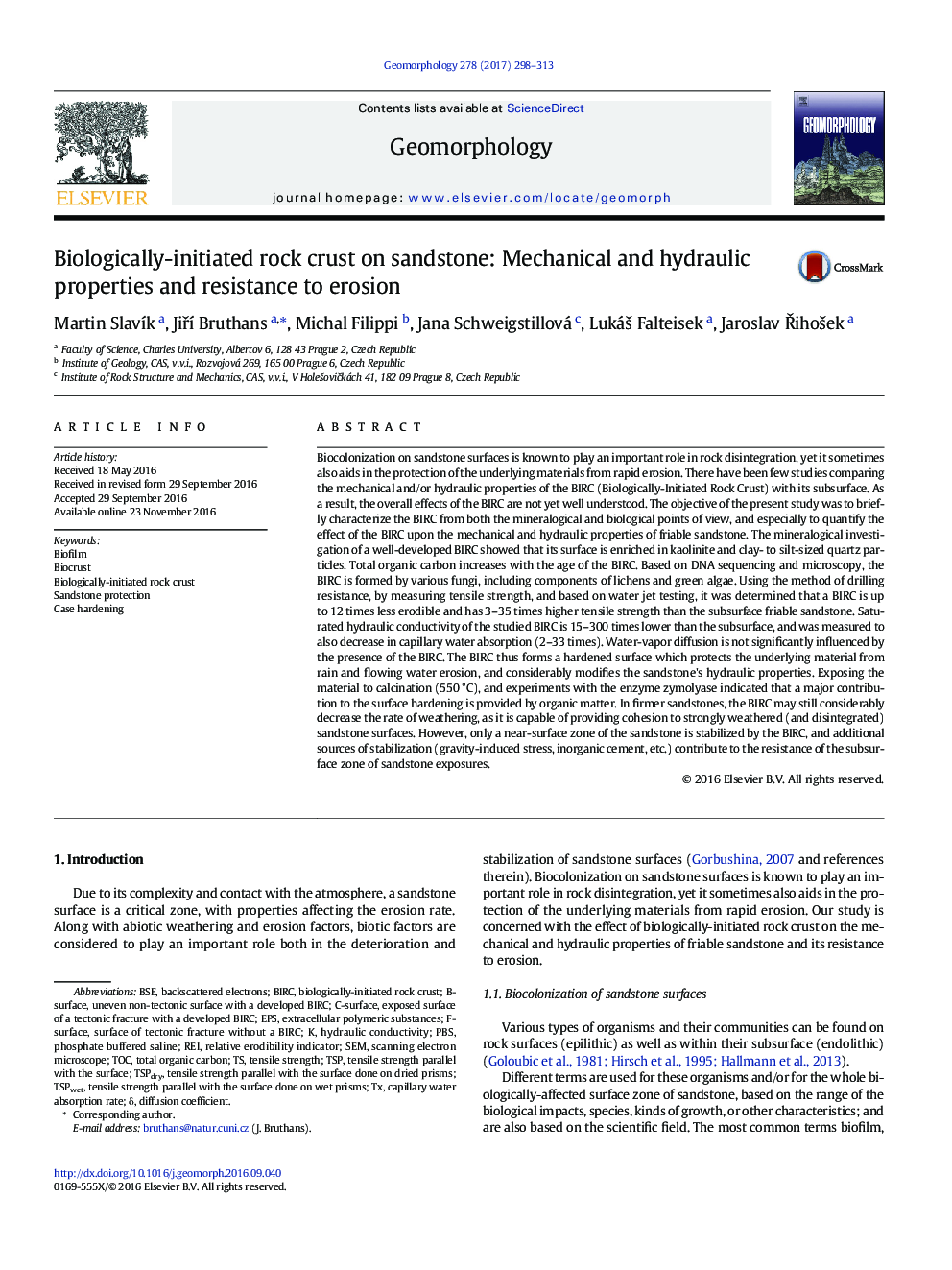| کد مقاله | کد نشریه | سال انتشار | مقاله انگلیسی | نسخه تمام متن |
|---|---|---|---|---|
| 8908352 | 1635371 | 2017 | 16 صفحه PDF | دانلود رایگان |
عنوان انگلیسی مقاله ISI
Biologically-initiated rock crust on sandstone: Mechanical and hydraulic properties and resistance to erosion
ترجمه فارسی عنوان
پوسته سنگی بیولوژیکی آغاز شده در ماسه سنگ: خواص مکانیکی و هیدرولیکی و مقاومت در برابر فرسایش
دانلود مقاله + سفارش ترجمه
دانلود مقاله ISI انگلیسی
رایگان برای ایرانیان
کلمات کلیدی
BIRCPBSBiocrustTSPBSETOCEPSTensile strength - استحکام کششیBackscattered electrons - الکترونهای متقارنBiofilm - بیوفیلمCase hardening - سخت شدن موردDiffusion coefficient - ضریب انتشارPhosphate buffered saline - فسفات بافر شورSEM - مدل معادلات ساختاری / میکروسکوپ الکترونی روبشیExtracellular polymeric substances - مواد پلیمری خارج سلولیscanning electron microscope - میکروسکوپ الکترونی اسکنHydraulic conductivity - هدایت هیدرولیکیREI - پادشاهTotal organic carbon - کل کربن آلی
موضوعات مرتبط
مهندسی و علوم پایه
علوم زمین و سیارات
فرآیندهای سطح زمین
چکیده انگلیسی
Biocolonization on sandstone surfaces is known to play an important role in rock disintegration, yet it sometimes also aids in the protection of the underlying materials from rapid erosion. There have been few studies comparing the mechanical and/or hydraulic properties of the BIRC (Biologically-Initiated Rock Crust) with its subsurface. As a result, the overall effects of the BIRC are not yet well understood. The objective of the present study was to briefly characterize the BIRC from both the mineralogical and biological points of view, and especially to quantify the effect of the BIRC upon the mechanical and hydraulic properties of friable sandstone. The mineralogical investigation of a well-developed BIRC showed that its surface is enriched in kaolinite and clay- to silt-sized quartz particles. Total organic carbon increases with the age of the BIRC. Based on DNA sequencing and microscopy, the BIRC is formed by various fungi, including components of lichens and green algae. Using the method of drilling resistance, by measuring tensile strength, and based on water jet testing, it was determined that a BIRC is up to 12 times less erodible and has 3-35 times higher tensile strength than the subsurface friable sandstone. Saturated hydraulic conductivity of the studied BIRC is 15-300 times lower than the subsurface, and was measured to also decrease in capillary water absorption (2-33 times). Water-vapor diffusion is not significantly influenced by the presence of the BIRC. The BIRC thus forms a hardened surface which protects the underlying material from rain and flowing water erosion, and considerably modifies the sandstone's hydraulic properties. Exposing the material to calcination (550 °C), and experiments with the enzyme zymolyase indicated that a major contribution to the surface hardening is provided by organic matter. In firmer sandstones, the BIRC may still considerably decrease the rate of weathering, as it is capable of providing cohesion to strongly weathered (and disintegrated) sandstone surfaces. However, only a near-surface zone of the sandstone is stabilized by the BIRC, and additional sources of stabilization (gravity-induced stress, inorganic cement, etc.) contribute to the resistance of the subsurface zone of sandstone exposures.
ناشر
Database: Elsevier - ScienceDirect (ساینس دایرکت)
Journal: Geomorphology - Volume 278, 1 February 2017, Pages 298-313
Journal: Geomorphology - Volume 278, 1 February 2017, Pages 298-313
نویسندگان
Martin SlavÃk, JiÅà Bruthans, Michal Filippi, Jana Schweigstillová, LukáÅ¡ Falteisek, Jaroslav ÅihoÅ¡ek,
